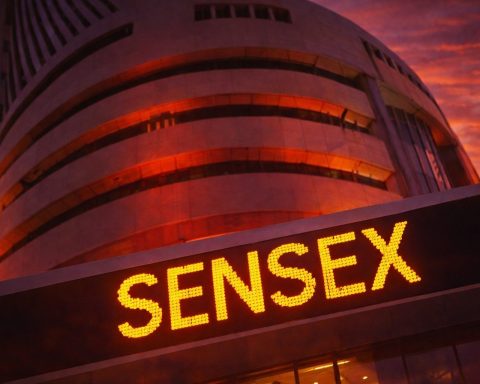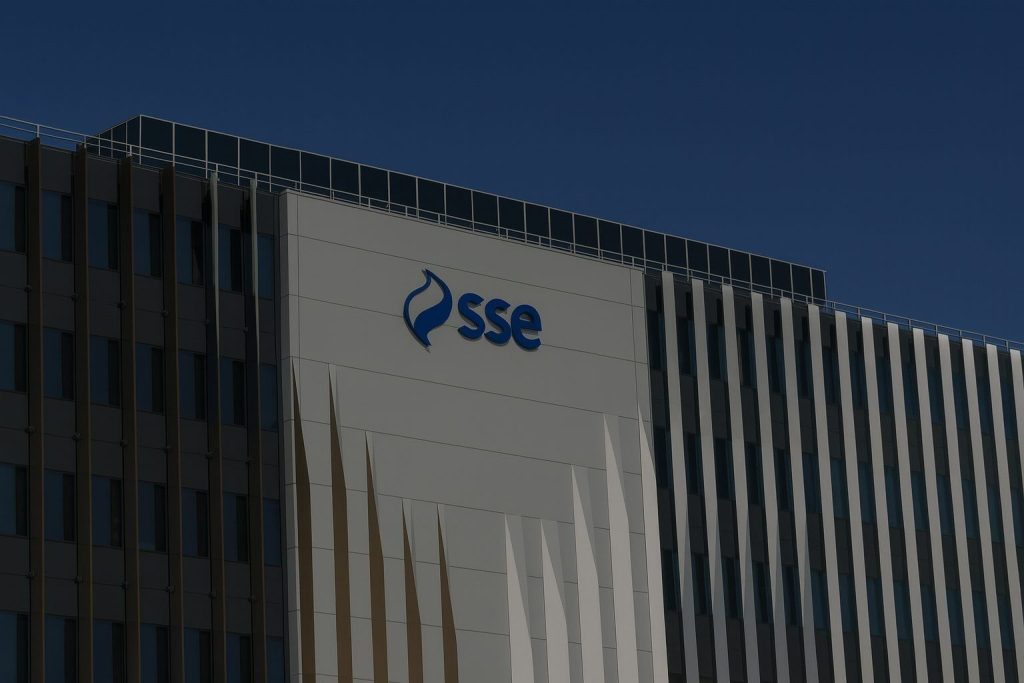Compass Group PLC’s share price is treading water on Friday, but the news flow around the FTSE 100 catering giant is anything but quiet. Fresh broker upgrades, a higher price target and continued analysis of this week’s full‑year results are keeping CPG firmly on investors’ radar.
As of late morning in London, Compass Group shares trade at 2,375p, unchanged on the day, having moved between 2,364p and 2,378p so far. The stock closed at the same level on Thursday, implying a flat session after a busy results week. [1]
Key takeaways for Compass Group PLC (CPG.L) on 28 November 2025
- Share price today: 2,375p, broadly flat intraday, with a market capitalisation around £40.3 billion. [2]
- Near the bottom of the 52‑week range: Trading just above a 52‑week low of 2,344p and about 17% below the 52‑week high of 2,853p. [3]
- Two fresh “buy” stances around the stock:
- FY25 results earlier this week: Revenue up about 9–10% to $46.1bn with organic growth of 8.7%, underlying operating profit up nearly 12%, and margin nudging higher to 7.2%. [6]
- Cash and dividends: Underlying free cash flow rose about 13.5% to $1.98bn and the full‑year dividend was lifted roughly 10% to 65.9 US cents per share. [7]
- Outlook: Management is guiding to around 7% organic revenue growth (excluding acquisitions) for 2026 and ~10% adjusted operating profit growth, implying profits growing faster than sales. [8]
Compass Group share price on 28 November 2025
On Friday 28 November 2025, Compass Group PLC (ticker CPG.L) is trading at 2,375p per share on the London Stock Exchange. Intraday data from London South East shows: [9]
- Current price: 2,375p (10:29 UK time)
- Day’s range: 2,364p – 2,378p
- Open: 2,377p
- Previous close: 2,375p
- Market capitalisation: ~£40.3bn
- 52‑week range: 2,344p – 2,853p
At this level, the shares sit only about 1% above their 52‑week low and roughly 17% below the 52‑week high, underlining how far they’ve slipped from earlier peaks despite the group’s operational progress. [10]
Interactive Investor noted earlier this week that Compass shares were down close to 10% year‑to‑date going into Tuesday’s results, even as the wider FTSE 100 index has risen by around 15% in 2025. [11] That disconnect between share price and business performance is a big part of why brokers are suddenly more vocal.
Fresh news today: upgraded views and higher price targets
Citi upgrade highlighted overnight
In the early hours of 28 November (AEDT), Proactive Investors reported that Citi has upgraded Compass Group from “Neutral” to “Buy”. The bank’s analysts argue that: [12]
- Growth drivers look sustainable into 2026.
- Like‑for‑like growth is expected to remain steady, supported by positive US volume trends and pricing running above 2.5%.
- Further margin expansion is anticipated.
- Citi sees 4–5% net new business growth as sustainable given Compass’s competitive position.
Citi also continues to highlight Compass and Aramark as its preferred names in the contract catering sector, pointing to stronger organic growth compared with peers. [13]
A separate broker round‑up from Alliance News, carried by shareprices.com on Thursday, confirms Citi raised its Compass target price to 3,000p from 2,750p when it shifted the rating to “buy”. [14]
Deutsche Bank Research joins in with a target hike
Today’s London broker wrap from Alliance News shows Deutsche Bank Research adding to the positive momentum. The bank has: [15]
- Raised its Compass Group price target to 3,000p from 2,900p
- Reiterated a “buy” recommendation
With the shares around 2,375p, a 3,000p target implies potential upside of roughly 26% from current levels, though that is an analyst view, not a guarantee.
FTSE 100 positioning and dividend credentials in focus
A new analysis piece from Kalkine Media, published this morning, frames Compass as strengthening its position within the FTSE 100 index after combining earnings momentum, contract renewals, and insider share purchases. [16]
Kalkine highlights several themes:
- The catering and support‑services sector is seeing renewed interest following Compass’s latest corporate developments and a broker upgrade.
- Recent full‑year earnings and stronger cash generation have reinforced perceptions of dividend sustainability.
- Regulatory filings show senior executives increasing their shareholdings, which commentators interpret as a sign of internal confidence. [17]
Those insider moves were confirmed via an RNS filing on 25 November, when non‑executive director Leanne Wood disclosed the purchase of 444 Compass shares at £23.92 (2,392p) on the London Stock Exchange. [18]
FY25 results: strong growth, small margin tick‑up, more leverage
Much of today’s bullish commentary builds directly on Compass Group’s full‑year results to 30 September 2025, released on 25 November.
According to the company’s annual results announcement and subsequent coverage: [19]
- Revenue reached $46.1bn, up about 9.7% year on year.
- Organic revenue (stripping out currency and M&A) grew 8.7%, driven by:
- Net new business of 4.5%
- Pricing of around 3%
- Like‑for‑like volume growth of about 1%
- Underlying operating profit rose to $3.34bn, up roughly 11–12% (at constant currency).
- Underlying operating margin edged up from 7.1% to 7.2%, reflecting operating leverage as revenue grew.
- Underlying free cash flow climbed about 13.5% to $1.98bn, with statutory operating cash flow of $3.37bn.
- Basic EPS jumped by roughly 34% to 110.1 US cents, helped by higher profit and fewer non‑underlying charges.
The group continues to emphasise a “step change” in performance versus the pre‑pandemic era. Net new business has now sat within its 4–5% target range for four consecutive years, with client retention at around 96%, compared with ~3% net new business growth before Covid‑19. [20]
Dividend and capital allocation
Shareholders are also seeing the benefits of that cash generation:
- The full‑year dividend per share is set at 65.9 US cents, up about 10.2% year on year. [21]
- The board continues to balance organic investment, acquisitions and shareholder returns.
- Net debt has increased by just over $1bn to $6.42bn, largely due to M&A (including the acquisition of Vermaat Groep B.V.) and dividend payments. Net debt to underlying EBITDA has moved up to 1.4x, still within the company’s 1.0–1.5x target range but at the upper end. [22]
Interactive Investor’s overview notes that while leverage has ticked higher, Compass remains firmly investment‑grade and continues to attract top‑tier clients from sectors including technology, energy, finance, education and healthcare. [23]
Guidance and outlook: slower inflation, but profits still set to grow faster than sales
Management’s guidance is central to the upbeat broker reaction.
From the results statement and follow‑up commentary: [24]
- For the year ahead (FY26), Compass expects around 7% revenue growth excluding acquisitions.
- It targets roughly 10% growth in adjusted operating profit, implying profit growth ahead of revenue as margins continue to creep higher.
- The group reiterates a “mid‑to‑high single‑digit” organic revenue growth algorithm over the long term, underpinned by structurally higher outsourcing of catering and support services.
A Reuters‑carried report on MarketScreener stresses that revenue growth is expected to moderate as inflation normalises, even as volume growth and new contracts remain supportive. [25] In other words: headline growth may cool from the highly inflation‑boosted levels of recent years, but the underlying volume and net new business story still looks healthy.
Analyst sentiment and valuation
Across the sell‑side community, sentiment towards Compass Group is now clearly tilted to the positive side.
- Interactive Investor flags that Morgan Stanley has reiterated an “overweight” stance and continues to treat Compass as a “top pick” following the results. [26]
- Today’s broker moves add Citi and Deutsche Bank to the list of bullish houses, both with 3,000p price targets. [27]
- MarketScreener’s compilation of analyst views for the US‑listed Compass ADR shows an overall “Outperform” consensus from around 19 analysts, with an average target price implying roughly 19% upside from the latest US close. [28]
On the numbers, data from Eulerpool suggests Compass currently trades on a trailing P/E ratio of about 28.6x and a price‑to‑sales ratio of roughly 1.16x, based on 2025 revenue of about $46.1bn and profit of $1.87bn. [29] Returns on capital remain robust, with estimates of ROE above 27% and ROCE above 20%, underscoring the group’s capital efficiency. [30]
Those multiples place Compass among the higher‑rated consumer services names in London, reflecting its scale, recurring contract base and cash generation — but they also leave less room for error if growth or margins disappoint.
Risks and what investors are watching next
While the tone of today’s coverage is supportive, the main commentary also flags several watchpoints:
- Cost pressures: Food input inflation has eased, but wage and regulatory costs (such as payroll taxes) remain a structural headwind that Compass must offset through pricing and efficiency. [31]
- M&A‑driven leverage: The acquisition of Vermaat and a busy pipeline of bolt‑ons have pushed net debt towards the upper end of management’s target range. If acquisitions continue at pace, investors will scrutinise return on invested capital and the risk of further leverage creep. [32]
- Macro sensitivity: While much of Compass’s revenue is contract‑based and relatively defensive (schools, hospitals, remote sites), parts of the business are tied to white‑collar workplaces, events and sports venues, which are more exposed to economic cycles. [33]
- Currency fluctuations: With the majority of profits earned in North America but the shares quoted in sterling, FX moves can affect reported earnings and investor perception. [34]
The next key scheduled event is the first‑quarter trading update and AGM on 5 February 2026, highlighted by Interactive Investor, which will offer an early read on whether Compass is tracking its new guidance. [35]
Bottom line: a steady share price, but a busier story underneath
For 28 November 2025, Compass Group’s share price may look uneventful at first glance — flat on the day and hovering just above its 52‑week low. Under the surface, though, two fresh “buy” calls, a higher price target, strong FY25 numbers and visible insider buying are all feeding a narrative of fundamental strength versus a subdued share price. [36]
Whether that gap ultimately closes will depend on execution: keeping net new business in the 4–5% range, protecting margins as inflation normalises, and showing that recent M&A can drive earnings without over‑stretching the balance sheet.
References
1. shareprices.com, 2. shareprices.com, 3. shareprices.com, 4. www.proactiveinvestors.com.au, 5. shareprices.com, 6. www.compass-group.com, 7. www.compass-group.com, 8. www.compass-group.com, 9. shareprices.com, 10. shareprices.com, 11. www.ii.co.uk, 12. www.proactiveinvestors.com.au, 13. www.proactiveinvestors.com.au, 14. shareprices.com, 15. shareprices.com, 16. kalkinemedia.com, 17. kalkinemedia.com, 18. shareprices.com, 19. www.compass-group.com, 20. www.compass-group.com, 21. www.compass-group.com, 22. www.compass-group.com, 23. www.ii.co.uk, 24. www.compass-group.com, 25. www.marketscreener.com, 26. www.ii.co.uk, 27. www.proactiveinvestors.com.au, 28. www.marketscreener.com, 29. eulerpool.com, 30. eulerpool.com, 31. www.ii.co.uk, 32. www.compass-group.com, 33. kalkinemedia.com, 34. www.ii.co.uk, 35. www.ii.co.uk, 36. shareprices.com







